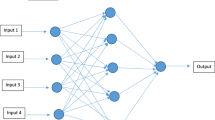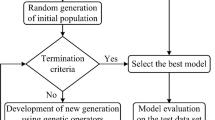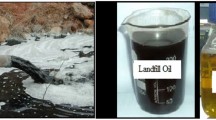Abstract
The huge fossil fuel consumption has created an unprecedented situation and, with the accompanying rise in car numbers, pollution levels have been well beyond human control. This is alarming enough to note that the level of pollution has surpassed all levels and the need for the hour is to find an alternative fuel that can really be of great help in reducing exhaust emissions and that efficiency. Experiments performed on S.I engine are considered to be time-consuming and the expenses met to perform these experiments are too costly, so the need of soft computing techniques involved in this area. Soft computing has shown a great deal of potential in providing researchers with the exact solution that could be used to validate or predict performance and emission parameters. The different software computing methods are widely used, includes the Adaptive Neuro Fuzzy Inference System (ANFIS), the Artificial Neural Network (ANN), the Fuzzy Expert System (FES), Response Surface Methodology (RSM) and Support Vector Machine (SVM). The one and only objective of this effort is to bring out the comprehensive review of various researchers who have carried out the work on soft computing techniques on S.I engines with a variety of alternative fuels.











Similar content being viewed by others
References
Kiani DM, Ghobadian B, Tavakoli T, Nikbakht MA, Najafi G (2010) Application of artificial neural networks for the prediction of performance and exhaust emissions in SI engine using ethanol–gasoline blends. Energy 35:65–69
Najafi G, Ghobadian B, Moosavian A, Yusaf T, Mamat R, Kettner M, Azmi WH (2016) SVM and ANFIS for prediction of performance and exhaust emission of a SI engine with gasoline–ethanol blended fuels. Appl Therm Eng 95:186–203
Najafi G, Ghobadian B, Yusaf T, Mamat S (2015) Optimization of performance and exhaust emission parameters of a SI(spark ignition) engine with gasoline-ethanol blended fuels using response surface methodology. Energy 90:1815–1829
Mehrnoosh D, Asghar H, Asghar M (2012) Thermodynamic model for prediction of performance and emission characteristics of SI engine fuelled by gasoline and natural gas with experimental verification. J Mech Sci Technol 26(7):2213–2225
Tasdemir S, Saritas I, Ciniviz M, Allahverdi N (2011) Artificial neural network and fuzzy expert system comparison for prediction of performance and emission parameters on a gasoline engine. Expert Syst Appl 38:13912–13923
Dagaut P, Togbe C (2008) Experimental and modeling study of the kinetics of oxidation of ethanol-gasoline surrogate mixtures (E85 Surrogate) in a jet-stirred reactor. Energy Fuels 22:3499–3505
Yusri IM, Mamat R, Azmi WH, Omar AI, Obed MA, Shaiful A (2017) Application of response surface methodology in optimization of performance and exhaust emissions of secondary butyl alcohol-gasoline blends in SI engine. Energy Convers Manag 133:178–195
Isin O, Uzunsoy E (2013) Predicting the exhaust emissions of a spark ignition engine using adaptive neuro-fuzzy inference system. Arab J Sci Eng 38:3485–3493
Yusri IM, Majeedb A, Mamata R, Ghazalia MF, Awada O, Azmi WH (2018) A review on the application of response surface method and artificial neural network in engine performance and exhaust emissions characteristics in alternative fuel. Renew Sustain Energy Rev 90:665–686
Liu Z, Zuo Q, Wu G, Li Y (2018) An artificial neural network developed for predicting of performance and emissions of a spark ignition engine fueled with butanol–gasoline blends. Adv Mech Eng 10(1):1–11
Tekin M, Saridemir S (2017) Prediction of engine performance and exhaust emissions with different proportions of ethanol–gasoline blends using artificial neural networks. Int J Ambient Energy 0143-0750
Thakur AK, Mer K, Kaviti A (2017) An artificial neural network approach to predict the performance and exhaust emissions of a gasoline engine using ethanol–gasoline blended fuels; Biofuels 1759–7269
Najafi G, Ghobadian B, Tavakoli T, Buttsworth DR, Yusaf TF, Faizollahnejad M (2009) Performance and exhaust emissions of a gasoline engine with ethanol blended gasoline fuels using artificial neural network. Appl Energy 86:630–639
Çay Y, Korkmaz I, Çiçek A, Kara F (2013) Prediction of engine performance and exhaust emissions for gasoline and methanol using artificial neural network. Energy 50:177–186
Kiani MKD, Ghobadian B, Ommi F, Najafi G, Yusaf T (2012) Artificial neural networks approach for the prediction of thermal balance of SI engine using ethanol–gasoline blends. In: Proceedings of the international conference on availability, reliability, and security. Springer; p 31–43
Kapusuz M, Ozcan H, Yamin JA (2015) Research of performance on a spark ignition engine fueled by alcohol–gasoline blends using artificial neural networks. Appl Therm Eng 91:525–534
Zuo Q, Zhu X, Liu Z, Zhang J, Wu G, Li Y. Prediction of the performance and emissions of a spark ignition engine fueled with butanol-gasoline blends based on support vector regression. Environ Progress Sustain Energy 38(3) https://doi.org/10.1002/ep.13042
Wonga P, Vongb C, Wonga H, Li K (2010) Modelling and prediction of spark-ignition engine powerperformance using incremental least squares support vector machines. AIP Conf Proc 1233:179
Awada O, Mamata R, Alic O, Azmia WH, Kadirgamaa K, Yusria IM, Lemand AM, Yusaf T (2017) Response surface methodology (RSM) based multi-objective optimization of fusel oil–gasoline blends at different water content in SI engine. Energy Convers Manag 150:222–241
Abdallaa NA, Taob H, Bagaberc S, Alid O, Kamile M, Maf X, Awad O (2019) Prediction of emissions and performance of a gasoline engine running with fusel oil–gasoline blends using response surface methodology. Fuel 253:1–14
Chen Y-L, Chen S, Tsai J-M, Tsai C-Y, Fang H-H, Yang I-C et al (2012) Optimization of suitable ethanol blend ratio for motorcycle engine using response surface method. J Environ Sci Health Part A 47:101–108
Yusri IM, Mamat R, Azmi WH, Najafi G, Sidik NAC, Awad OI (2017) Application of response surface methodology in optimization of performance and exhaust emissions of secondary butyl alcohol-gasoline blends in SI engine. Energy Convers Manag 133(178):95
Yusri IM, Mamat R, Azmi WH, Najafi G, Sidik NAC, Awad OI (2016) Experimental investigation of combustion, emissions and thermal balance of secondary butyl alcohol- gasoline blends in a spark ignition engine. Energy Convers Manag 123:1–14
Kalogirou SA (2003) Artificial intelligence for the modeling and control of combustion processes: a review. Prog Energy Combust Sci. https://doi.org/10.1016/S0360-1285(03)00058-3
Lee SH, Howlett RJ, Walters SD et al (2007) An modelling and control of internal combustion engines using intelligent. Cybern Syst 38(5–6):509–533
Kilagiz Y, Baran A, Yildiz Z, Murat C (2005) A fuzzy diagnosis and advice system for optimization of emissions and fuel consumption. Expert Syst Appl 28:305–311
Shrivastava N, Khan Z (2018) Application of soft computing in the field of internal combustion engines: a review. Arch Comput Methods Eng 25:707–726
Saraswati S, Agarwal PK, Chand S (2011) Neural networks and fuzzy logic-based spark advance control of SI engines. Expert Syst Appl 38:6916–6925
Mozaffari A, Azad NL (2015) An ensemble neuro-fuzzy radial basis network with self-adaptive swarm based supervisor and negative correlation for modelling automotive engine cold start hydrocarbon emissions: a soft solution to a crucial automotive problem. Appl Soft Computation J 32:449–467
Lee SH, Howlett RJ, Walters SD (2004) Emission reduction for a small gasoline engine usingfuzzy control. IFAC Symp AdvAutomot Control 200–205
Author information
Authors and Affiliations
Corresponding author
Additional information
Publisher's Note
Springer Nature remains neutral with regard to jurisdictional claims in published maps and institutional affiliations.
Rights and permissions
About this article
Cite this article
Thakur, A.K., Kaviti, A.K., Singh, R. et al. Specific Soft Computing Strategies for Evaluating the Performance and Emissions of an SI Engine Using Alcohol-Gasoline Blended Fuels—A Comprehensive Analysis. Arch Computat Methods Eng 28, 3293–3306 (2021). https://doi.org/10.1007/s11831-020-09499-x
Received:
Accepted:
Published:
Issue Date:
DOI: https://doi.org/10.1007/s11831-020-09499-x




